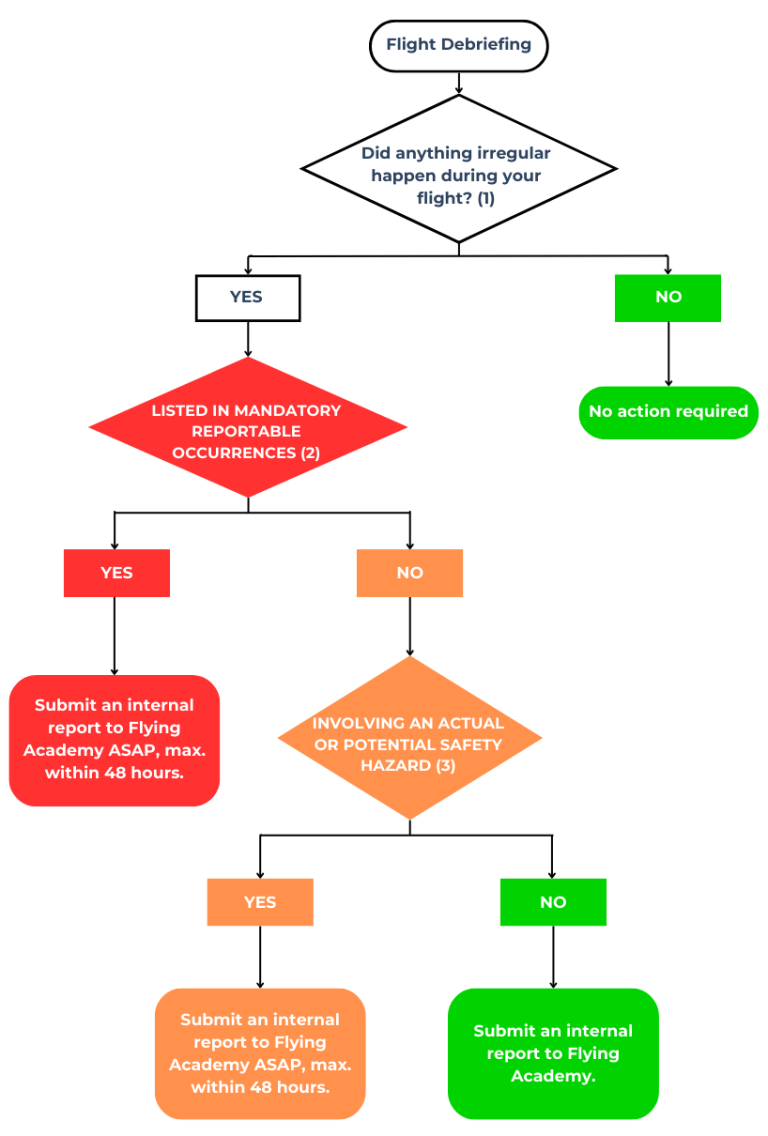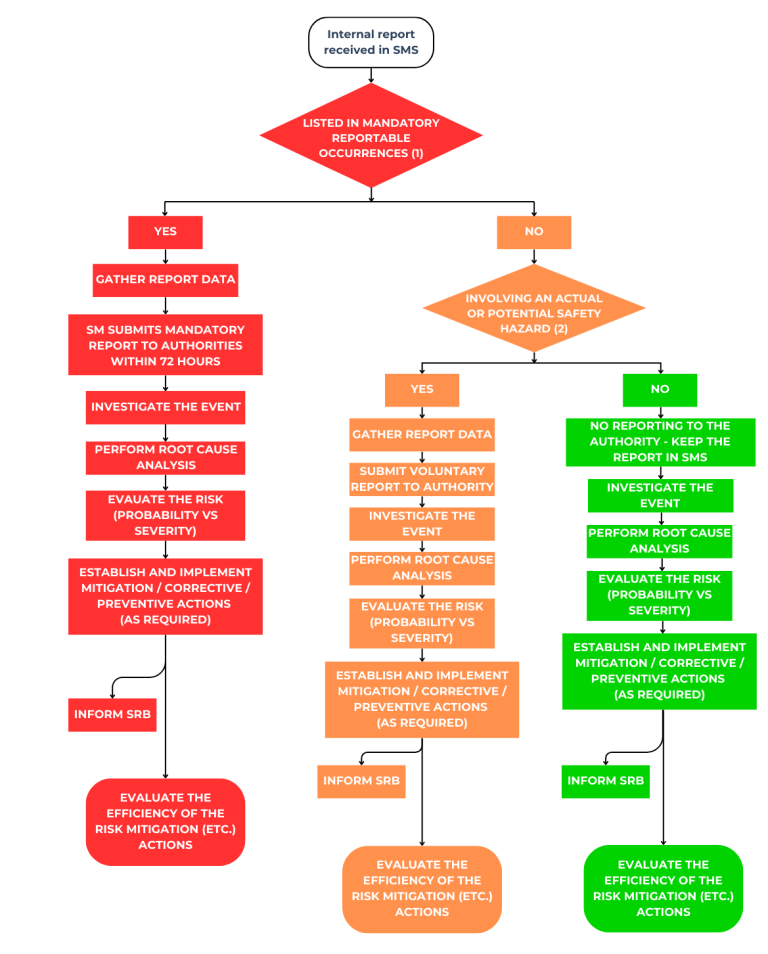EASA SAFETY PROCEDURES DOCUMENTS
CREW DECISION FLOWCHART

Did any of the following happen during your flight:
- Any irregularity or non-standard situation?
- Any situation that made you uncomfortable or concerned?
- Any deviation from normal procedures or expected aircraft performance?
- Any unusual interaction with ATC or other aircraft?
- Any environmental factors that affected your flight (weather, wildlife, etc.)?
a. Air Operations:
- Unintentional loss of control
- Landing outside the intended area
- Inability to achieve required aircraft performance during take-off, climb, or landing.
- Runway incursion or excursion
- Flight performed with unairworthy aircraft or incomplete flight preparation
- Unintended flight into IMC for non-IFR aircraft/pilot.
b. Technical
- Severe abnormal vibration (e.g. control surface flutter)
- Flight control malfunction or disconnection
- Substantial aircraft structural failure or deterioration
- Loss of aircraft parts in flight
- Failure of engine, propeller, fuel system, or other essential system
- Fluid leakage resulting in fire hazard or contamination risk.
c. Air Navigation
- Interaction with ANS resulting in endangerment (e.g. incorrect service, conflicting communications)
- Airspace infringement
d. Emergencies
- Any occurrence leading to an emergency call
- Fire, explosion, smoke, or toxic fumes in aircraft
- Pilot incapacitation
e. External Environment
- Collision or near-collision requiring evasive action
- Wildlife strike causing damage or essential system malfunction
- Severe turbulence causing injury or requiring damage check
- Icing endangering the aircraft or occupant
These should be reported if they may involve an actual or potential aviation safety hazard, such as:
- Minor technical issues not affecting airworthiness;
- Unusual weather phenomena not severe enough for MOR;
- Air traffic control issues not resulting in immediate danger;
- Ground handling incidents without damage or injury;
- Crew safety events not leading to emergency situations;
- Security-related occurrences without immediate safety impact.
STAFF DECISION FLOWCHART
a. Air Operations:
- Unintentional loss of control
- Landing outside the intended area
- Inability to achieve required aircraft performance during take-off, climb, or landing.
- Runway incursion or excursion
- Flight performed with unairworthy aircraft or incomplete flight preparation
- Unintended flight into IMC for non-IFR aircraft/pilot.
b. Technical
- Severe abnormal vibration (e.g. control surface flutter)
- Flight control malfunction or disconnection
- Substantial aircraft structural failure or deterioration
- Loss of aircraft parts in flight
- Failure of engine, propeller, fuel system, or other essential system
- Fluid leakage resulting in fire hazard or contamination risk.
c. Air Navigation
- Interaction with ANS resulting in endangerment (e.g. incorrect service, conflicting communications)
- Airspace infringement
d. Emergencies
- Any occurrence leading to an emergency call
- Fire, explosion, smoke, or toxic fumes in aircraft
- Pilot incapacitation
e. External Environment
- Collision or near-collision requiring evasive action
- Wildlife strike causing damage or essential system malfunction
- Severe turbulence causing injury or requiring damage check
- Icing endangering the aircraft or occupant
These should be reported if they may involve an actual or potential aviation safety hazard, such as:
- Minor technical issues not affecting airworthiness;
- Unusual weather phenomena not severe enough for MOR;
- Air traffic control issues not resulting in immediate danger;
- Ground handling incidents without damage or injury;
- Crew safety events not leading to emergency situations;
- Security-related occurrences without immediate safety impact.
These generally do not need to be reported externally but should be logged internally:
- Normal wear and tear issues addressed during routine maintenance;
- Minor delays due to non-safety related factors;
- Crew discomfort not related to safety (e.g., air ventilation, heat issues);
- Minor deviations from procedures without safety impact;
- Training events within normal parameters.

